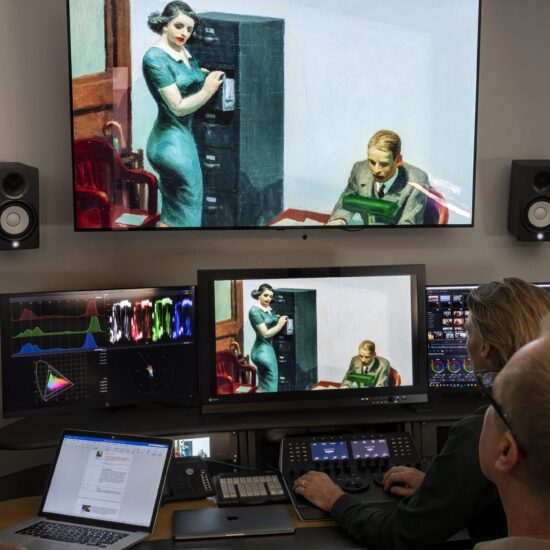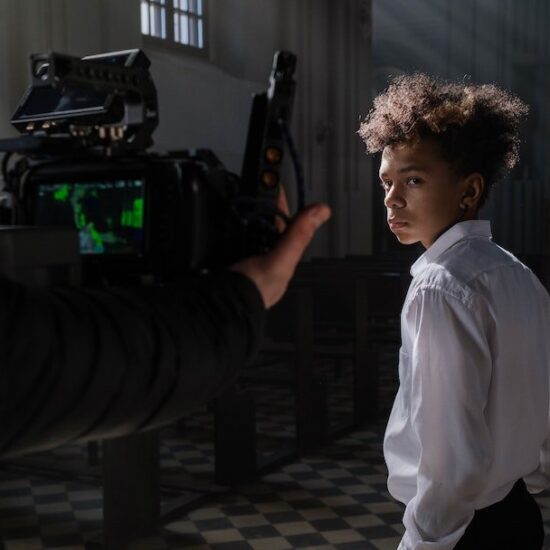
There are all sorts of articles on the internet about compromises low budget filmmakers make. Usually it is all about the types of compromises made during the actual shoot. I read stories of how film crews were stuck together with gaffer tape, horrid working conditions and clapped out gear.
Let’s start at the very beginning and see if we can see the sorts of compromises low budget filmmakers make.
The Script
Are you starting off making a film without much money? Let’s look at the elements of a script that cost money:
Firstly, numbers of actors. The more actors the more mouths to feed.
How many actors in the first Paranormal Activity? Or in Buried?
Compromise number 1: Limited actors
Compromise number 2 – special effects are expensive. or are they?
If you want ten thousand camels running you better get a lot of money together – or research the capability of micro budget special effects. It could be cheap enough to be within range.
Compromise number 3. Locations.
The thing that really ramps up a budget is the number of locations. Everytime you move from one location to another it costs time and money.
Here’s the script that seems to launch every single career of writer/directors: A bunch of actors in a house that get chopped up. Isn’t this George Romero’s Night of the Living Dead? Or how about Reservoir Dogs? When Michael Madsen was at Raindance Film Festival he told us how all of the locations were a short walk from the warehouse making this essentially a one-location movie. Thus very cheap.
But beware. Writing a confinement movie, or single locatiion movie puts you into a load of competition becasue everyone is doing it. So now you need to think how you are going to enhance the story. A common sub-genre of confinement movie is the home invasion story – something Raindance created successfully with the Mark Rogers script Deadly Virtues directed by filmmaker in residence Ate de Jong (Drop dead Fred).
The Budget
There are three ways no-budget filmmakers pay for the stuff they need and the people they need.
- Cash, of course the simplest way.
- Deferred, meaning people and equipment suppliers get paid later, out of profit (if any).
- And in-kind – in other words perks are exchanged for good and services. This is very common in so-called product placement deals, and of course it is the basis of crowd-funding campaigns.
Each of these payment methods can cause heart-ache if not handled correctly.
The Shoot
There are loads and loads of money-saving tricks you can use in your film. These tricks-of-the-trade are what I discuss in my weekend masterclass Lo-to-no Budget filmmaking.
Here’s a simple one:
If you are shooting outside at night, take a watering can and wet the pavement like we did in this Raindance film Festival trailer written and directed by Mark Williams.
Compromises Low Budget Filmmakers Make in Marketing
Lack of cash is not one of the the main compromises low budget filmmakers make. It’s once the film is made that the competition for eyeballs, distribution and more importantly money. It’s here that a filmmakers resourcefulness is challenged. There are three main compromises low budget filmmaker make:
1. Advertising
Advertising is hellishly expensive. Ads in newspapers, bus shelters, website banners, radio and TV spots are nearly impossible for a low budget filmmaker to afford.
It is possible to convince a brand to advertise your project. Fedex paid money for Castaway with Tom Hanks, and Harley Davidson paid for Ewan Macgregor’s round the world bike trips. So-called product placement only works if the brand sees a marketing hook and brand extension values. Setting these relationships up is very time consuming. Raindance is very fortunate to have such a relationship with Lexus.
2. Marketing
Marketing is one of those three-cornered relationships like the ones you see in supermarkets. You know what I mean. Buy the ketchup get the potato fries half price. Again this is time-consuming to set up, but when it works it can be an effective way to get your film out there.
A successful marketing campaign combines online and offline advertising. Some projects, especially issue based films suit this approach well. We are currently working with our Postgraduate film degree students Dagmura and Andy who have a documentary about the Woman’s March the day after Trump was inaugurated. The march where five million women marched in cities all over the world. They are hoping to tie into the marketing of the different women’s groups around the world. You can support We Still Rise Movie here.
3. Publicity
It’s with publicity that low budget filmmakers can have a real edge. Creative use of marketing assets like posters, trailer and campaign images can quickly go viral if handled correctly. The so-called ROR or Rate of Retun easily outdoes the equivalent metrics in advertising and marketing campaigns.
The Blair Witch Project screened at Raindance in 1999. The publicity created for this micro budget movie is easily the best example of what publicity can do for your film and is easily the best of all time. This film scored huge media presence in the days before Youtube and Facebook. Here’s how The Bair Witch Project did it
Fade Out
In summary, it’s great you want to make a movie. Having little or no money need not be a problem. Compromises low budget filmmakers make? View limited resources as an opportunity to exercise your mettle to solve a series of challenging creative opportunities.
Once you have settled and made your film, remember to enhance your social media. Don’t forget to create your own personal brand.
And check out the screenings, events, parties and Virtual Reality at the Raindance Film Festival.














